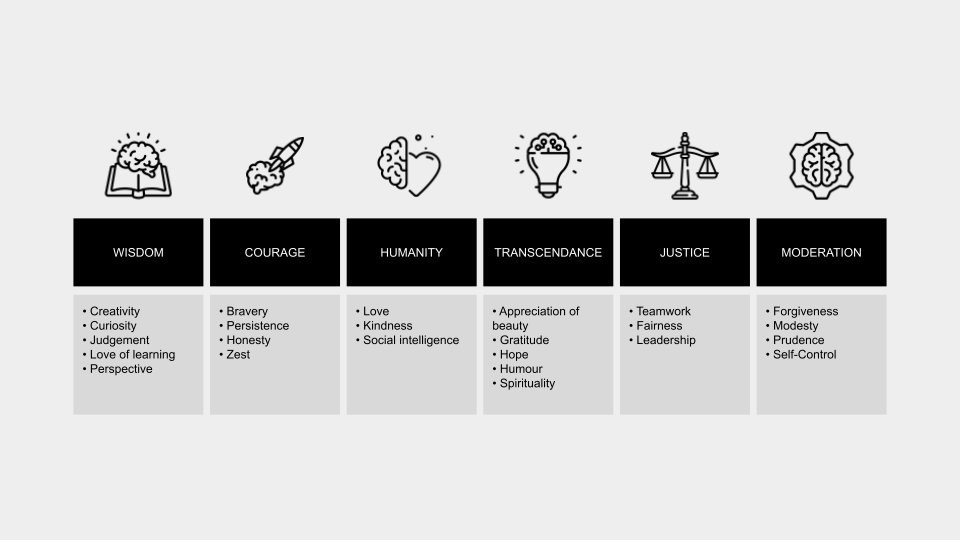Have you ever noticed that it is far easier to dwell on mistakes than it is to focus on the things that went well? For instance, you might become fixated on the three seconds in which you tripped over your words during a presentation, rather than acknowledging the remaining twenty minutes in which your performance was flawless.
This tendency to dwell on our shortcomings can negatively impact our mental health, leading to low self-esteem, and even to anxiety and depression. However, simple, accessible tools such as strength-based journaling are available to help us build resilience.
The science of strength-based journaling
As adopting psychological techniques that help us to focus on character strengths has been shown to increase overall well-being, positive psychology interventions based on strength-based therapy have been of great interest to psychologists in recent years. In essence, strength-based approaches help individuals focus on what is already working.
Researchers Christopher Peterson and Martin Seligman argued that out of 24 possible character strengths, individuals possess three to seven strengths that best describe them. These strengths are believed to be malleable, meaning that, once identified, they can be used for strength-based exercises that target overall well-being. However, just knowing what your strengths are is not enough.
Indeed, Seligman later discovered that when participants were asked to use each of their so-called “signature strengths” in a new way each day for one week, they reported greater happiness and reduced depression at various intervals until the end of the 6-month study.
But simply identifying one’s strengths had little effect on happiness, depression, or overall well-being. This suggests that to have the greatest impact on our mental health, the identification of strengths should be combined with a tool to express, reflect on, and develop those qualities.
In line with these earlier findings, René Proyer and colleagues found that working on signature strengths was beneficial for our well-being. As part of the study, participants could select from 24 character strengths including creativity, curiosity, bravery, kindness or honesty. Compared to a placebo group, those who focused on their strengths demonstrated increased happiness, greater satisfaction with their health, and improved perception of their general living conditions.
Strength spotting, which can be done just by using a journal, helps us shift from being preoccupied with repairing the worst parts of ourselves to instead building on the best parts already within us. By allowing us to make the most of our strengths, it can help unlock the opportunities already within us. Developing this confidence may lead to resilience and greater self-esteem, an important asset when life feels challenging.
Getting started with strength-based journaling
Strength-based therapy can be costly and time-consuming, but strength-based journaling provides an extremely convenient way to experience the benefits of positive psychology from the comfort of your own home.
It’s free and you can get started at any time. There are no special tools required. Simply choose a notebook, get a fresh sheet of paper, or use your favourite note-taking app.
Staring at a blank page while hoping for inspiration can be daunting. For this reason, you may find it helpful to use a list of strength-based prompts to get you started and help you to quickly discover more about your individual talents. Prompts might include:
- If you asked your closest friend about your best qualities, what would they say?
- Describe the last time your manager praised your work.
- Write down in detail your proudest accomplishment.
- What do you appreciate most about your personality?
- How do you maximise your personal strengths at work?
Try to think of ten prompts spanning both your professional and personal areas of strength. You may find it helpful to include prompts that cover your career, friendships and relationships, your values, your personality traits, and how you handle difficult feelings such as guilt or regret. By using a wide range of prompts, you can create a detailed record of your strengths bridging the different facets of your life.
Once you have decided on your prompts, begin to elaborate on each one. Your answers might take the form of bullet points, or you may prefer to write in long-form prose to describe your strengths in detail.
There is no pressure to answer every prompt in one sitting. Research suggests that writing about your positive experiences three times weekly for just 15 minutes leads to improved well-being, decreased anxiety, and more resilience.
In short, apply these three easy steps to start applying strength-based journaling:
- Craft a curated list of strength-based journaling prompts to choose from.
- Block recurring sessions in your calendar, which can combine strength-based journaling with other self-reflection exercises, such as your weekly review.
- Write down your answers for as little as 15 minutes.
Strength-based journaling is a free, convenient, and accessible positive psychology tool. This mindfulness method helps us to shift from dwelling on negative thoughts and beliefs to focusing on our strengths and capabilities.
Once you have developed your list of prompts, you can build the habit of regularly dedicating a few minutes to exploring your strengths. By focusing on the positives in your life and your character, you will boost your self-esteem and resilience, making it easier to manage your mental health.

